Sea Water Evolution Requirements for ocean formation
advertisement
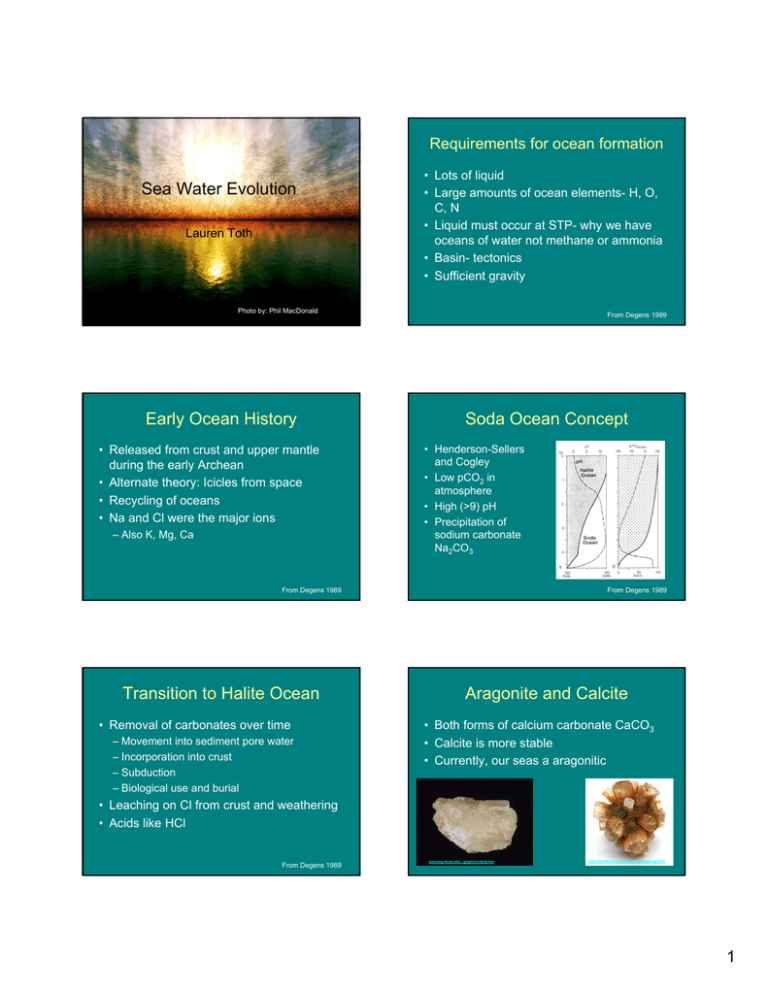
Requirements for ocean formation Sea Water Evolution Lauren Toth • Lots of liquid • Large amounts of ocean elements- H, O, C, N • Liquid must occur at STP- why we have oceans of water not methane or ammonia • Basin- tectonics • Sufficient gravity Photo by: Phil MacDonald Early Ocean History • Released from crust and upper mantle during the early Archean • Alternate theory: Icicles from space • Recycling of oceans • Na and Cl were the major ions – Also K, Mg, Ca From Degens 1989 Soda Ocean Concept • Henderson-Sellers and Cogley • Low pCO2 in atmosphere • High (>9) pH • Precipitation of sodium carbonate Na2CO3 From Degens 1989 Transition to Halite Ocean • Removal of carbonates over time – Movement into sediment pore water – Incorporation into crust – Subduction – Biological use and burial From Degens 1989 Aragonite and Calcite • Both forms of calcium carbonate CaCO3 • Calcite is more stable • Currently, our seas a aragonitic • Leaching on Cl from crust and weathering • Acids like HCl From Degens 1989 www.beg.utexas.edu/.../graphics/calcite.htm www.jewelsforme.com/Aragonite.asp?gemtype=GS 1 Aragonitic vs. Calcitic Seas • Shifts have 100-200My periodicity • Aragonite dominates when Mg/Ca ratio is high – Evaporates of MgSO4 • Calcite dominates when Mg/Ca is low – Evaporates of KCl • Shifts in pH may also contribute to switches Hardie 1996 The role of seafloor spreading • Hydrothermal brine • Small changes in midocean ridge spreading rates can mean large changes in ocean chemistry • Spreading depletes Mg and SO4 and produces huge increases in Ca Hardie 1996 Mg/Ca • <2 produces low Mg calcite • 2-5.3 produces high Mg calcite and aragonite • 5.3 produces aragonite Hardie 1996 Hardie 1996 Hardie 1996 2 Evolution of calcification • Rise in Ca leading up to the Cambrian explosion – Looked at fluid inclusions using SEM to determine Ca content – Depleted in Mg and SO4 • Why? – Defense – Detoxification Calcification today • Corals, green algae, some mollusks, and some red algae use aragonite • Echinoderms and most red algae use high-Mg calcite • Formaniferans use low-Mg calcite http://scienceblogs.com/voltagegate/2007/05/global_warming_conclusively_li.php http://sealevel2.jpl.nasa.gov/jr_oceanographer/images/o-sager-cocolit1.jpg www.reefcorner.com/SpecimenSheets/halimeda.htm commons.wikimedia.org/wiki/Image:Seaurchin.jpg Brennan et. al 2004 3
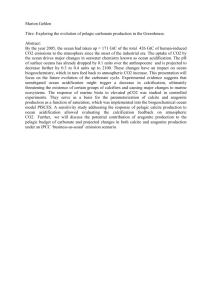

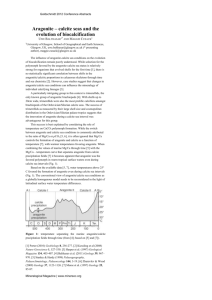
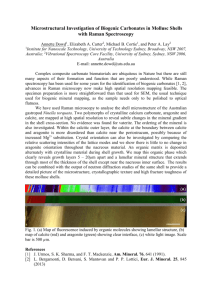
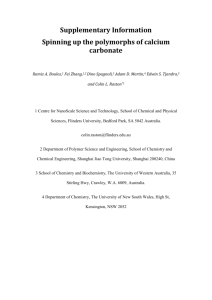
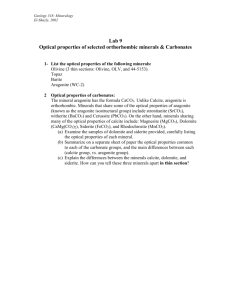
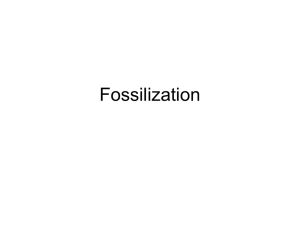

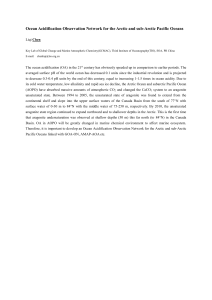
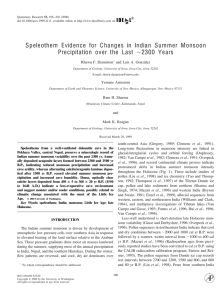
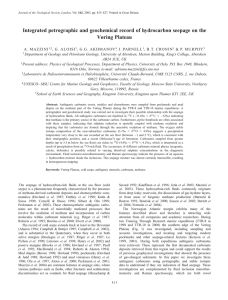
![Nucleation of metastable aragonite CaCO[subscript 3] in seawater Please share](http://s2.studylib.net/store/data/012617271_1-f58861947d6e45ec715a0115c78b60b4-300x300.png)